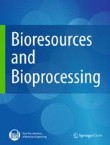N-terminal truncated phospholipase A1 accessory protein PlaS from Serratia marcescens alleviates inhibitory on host cell growth and enhances PlaA1 enzymatic activity

Phospholipase A1 (PLA1) is a phospholipid hydrolase widely used in food, medical, and textile industries. However, its expression and enzymatic activity are limited. This study elucidates the role of PlaS in enhancing the expression and activity of PlaA1 through N-terminal truncation. It was demonstrated that truncating the N-terminal region of PlaS effectively overcomes its inhibitory effect on the host cells, resulting in improved cell growth and increased protein solubility. The two-hybrid assay confirms the interaction between PlaA1 and N-terminal truncated PlaS (∆N27 PlaS), highlighting their binding capabilities. Furthermore, in vitro studies using Biacore analysis reveal a concentration-dependent and specific binding between PlaA1 and ∆N27 PlaS, exhibiting high affinity. Molecular docking analysis provides insights into the hydrogen bond interactions between ∆N27 PlaS and PlaA1, identifying key amino acid residues crucial for their binding.
